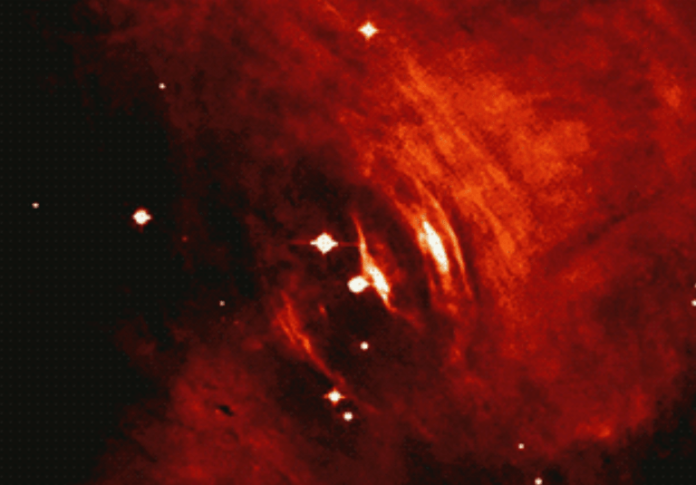Astronomers have found several exoplanets in orbits around pulsars and white dwarfs, which may turn out to be objects from quark matter. This hypothetical form of the substance can be stable and very durable, which allows such bodies to withstand high tidal loads and not collapse, despite trajectories close to stellar remnants.
The densest known form of matter is the interiors of neutron stars. In this state, matter is packed, according to various estimates, several times denser than in atomic nucleus: its density exceeds 3 × 10 17 kilograms per cubic meter.
However, the exact properties of matter in the bowels of neutron stars are unknown. It is generally believed that there is a mixture of particles with a predominant fraction of neutrons, but there are other ideas. In particular, theorists have put forward models in which, at the centers of such bodies, matter is predominantly represented by pions or other particles.
According to one of these hypotheses, the most stable state of matter at extremely high pressures and relatively low energies is quark matter. In this case, in the nuclei of neutron stars hadrons (protons and neutrons) can be destroyed, and instead, the substance will be represented by hyperons, baryons, bosons, or even free quarks. Since neutron stars are the most extreme objects from ordinary matter, it is in the phenomena associated with them that it is proposed to search for the ground state of superdense matter.
The work of Chinese astrophysicists led by Hang Gong of the Chinese Academy of Sciences describes the idea of finding such a form of matter and presents a list of 11 objects that fit the formulated criterion. The idea of scientists is not to analyze the properties of stars, but to search for extreme planets in the orbits around them: theoretically, they can also consist of quark matter.
Researchers write that the density of stone planets can hardly exceed 30 thousand kilograms per cubic meter, so they can not turn to compact stars at a very close distance – tidal forces will destroy them. If such planets exist, then they can consist of excellent other similar objects of matter.
According to the calculations of the authors, stone planets cannot exist in orbits with a radius of less than 560 thousand kilometers or, equivalently, with an orbital period of less than 6.1 thousand seconds. It turned out that the four planets of the pulsars (XTE J1807-294 b, XTE J1751-305 b, PSR 0636 b, PSR J1807-2459A b) completely satisfy this criterion, and two more (PSR J1719 + 14 b and PSR J2051-0827 b) only slightly do not reach him. Also, five planets in white dwarfs (GP Com b, V396 Hya b, J1433 b, WD 0137-349 b, and SDSS J1411 + 2009 b) turned out to have suitable or close parameters.
Scientists provide an overview of possible ways to understand the structure of these objects and call the search for gravitational waves the most promising. The above analysis shows that the gravitational signal from the three systems can be extracted from the data of the LIGO antennas using data processing for the year of observations. If these planets fall on the stars, then their signal will be clearly distinguishable, and in its form, you can also say a lot about the internal structure.
Via | arXiv
